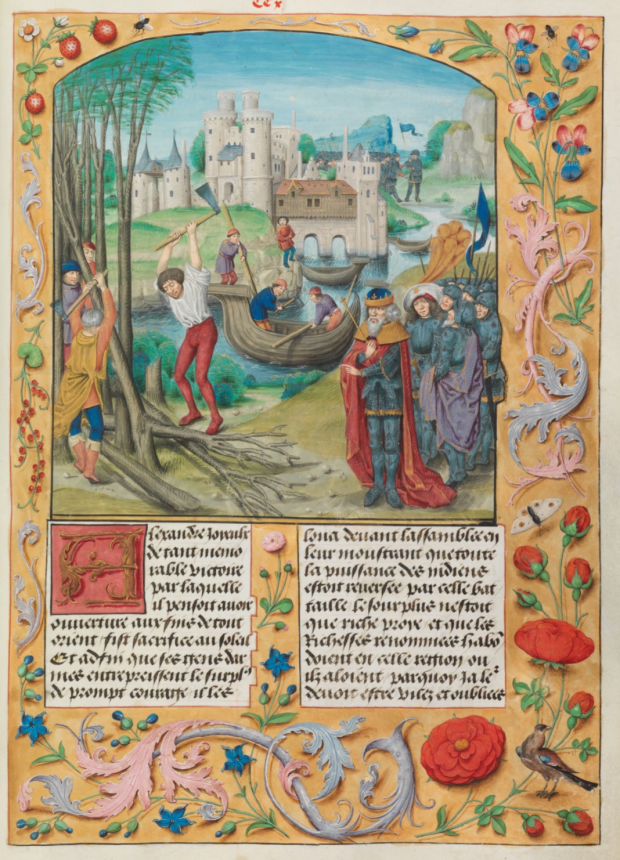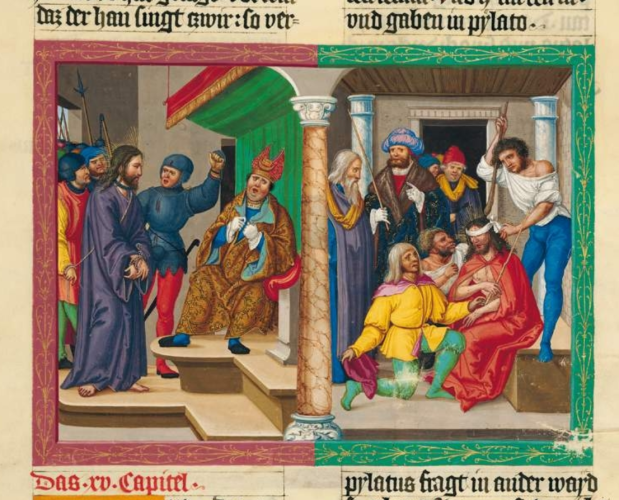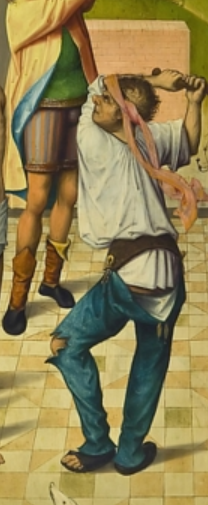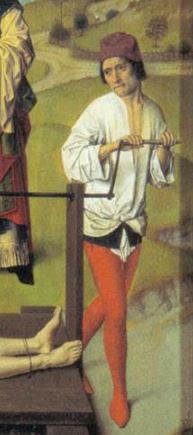It is the conventional wisdom amongst 15th C Living historians that hose (tight trousers..) do not stay up on their own. Modern interpretations of hose often have the waistline higher than perhaps they should, and some living historians regard hose worn with no upper garment to support them as a common ‘re-enactorism’.
We have previously blogged about the importance of joined hose in the period, and indeed our kit standard currently dictates that a doublet (or sleeveless doublet (should be worn in conjunction with them.
But history is a funny thing. New research is undertaken all the time, and of late we have found a number of cases where joined hose are worn on their own with no upper garments supporting them.

Quintus Curtius Rufus, Faits et gestes d’Alexandre Brügge · ca. 1475-1500 Ms. fr. 76 Folio 221r

Ottheinrich-Bibel, Bd. 2: Mt 26,31 – Lk 5,26 Regensburger Raum, 15./16. Jh. Cgm 8010(2) Folio 53
To be clear – we believe these are edge cases, and by far the majority of illustrations show hose worn with an upper garment. There is certainly NO evidence for the belted untucked shirt that seems to be common in some groups portrayals and worn like an earlier saxon/viking tunic. Indeed, some source show a shaped belt worn over the shirt:

Flagellation of Christ, c 1480, detail. This appears to show joined hosen suspended from a shaped belt, rather than a doublet.
Our research will continue, but for now – the jury is very much out! Until then, its still probably best to roll down your doublet if hot..

Detail from Martyrdom of St Erasmus (triptych) by BOUTS, Dieric the Elder


